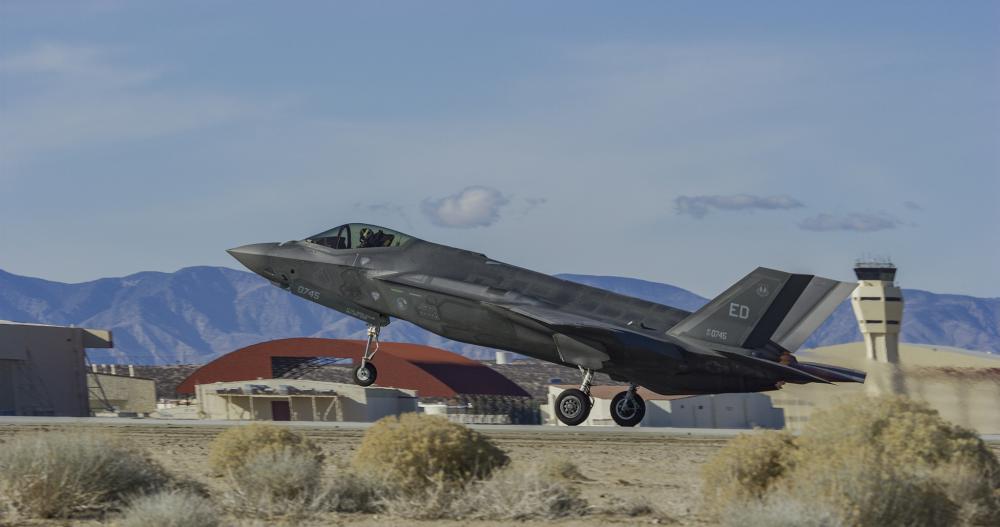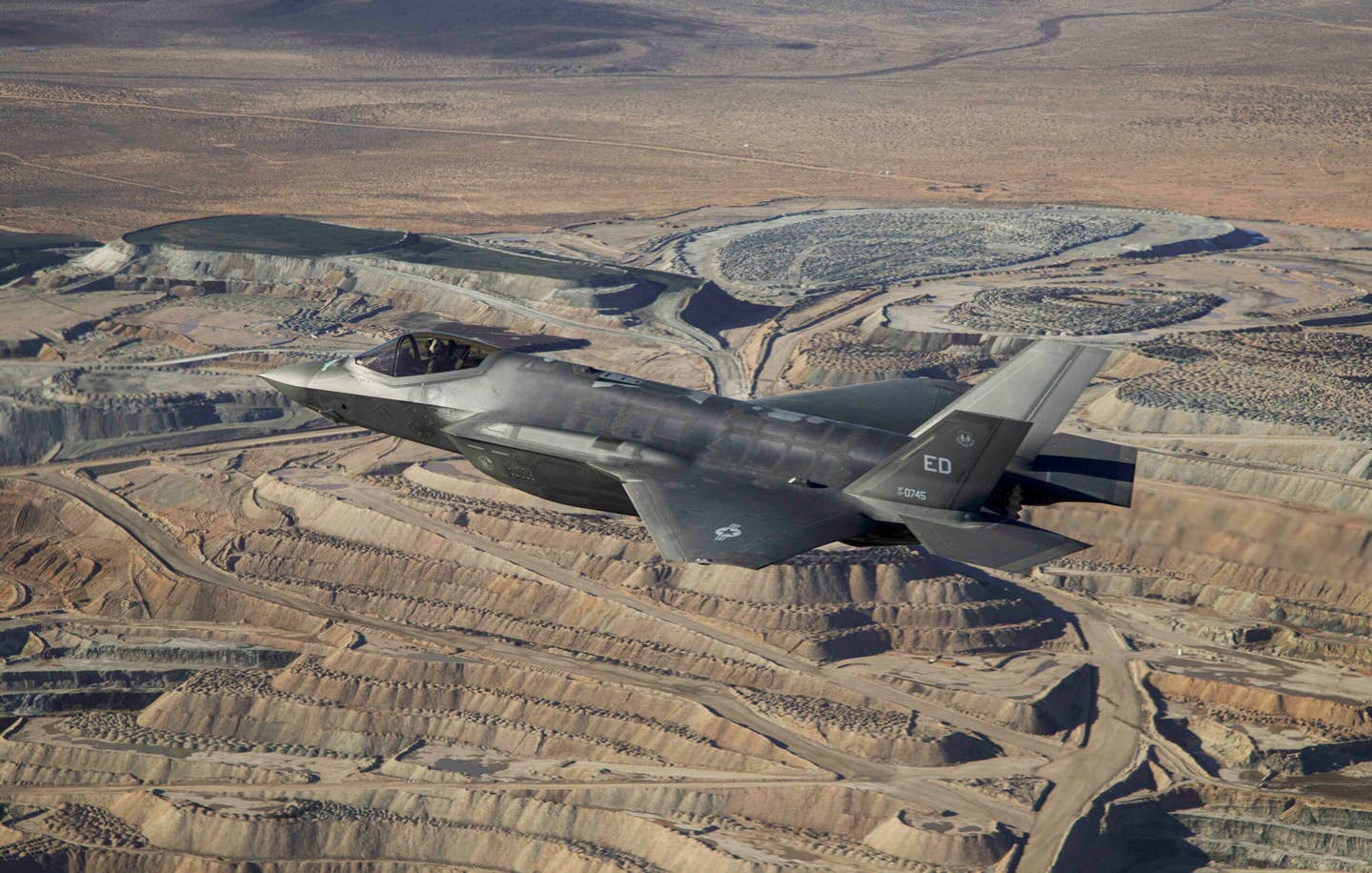The F-35 Lightning II Joint Strike Fighter (JSF) is the Department of Defense’s most ambitious program. It plays a critical role in the US military’s capability to counter threats from global adversaries. Allies in Europe and the Indo-Pacific have widely acquired F-35s, which are expected to play a crucial role in tackling Russian and Chinese threats.
The frustration over delays in the F-35’s Tech Refresh 3 (TR-3) update has reached a boiling point, with the US House Armed Services Committee (HASC) proposing a significant reduction in the purchase of F-35s in fiscal 2025.
Led by Rep. Mike Rogers (R-Ala.), the HASC unveiled its “chairman’s mark” of the 2025 National Defense Authorization Act, which includes reducing nearly $1 billion from F-35 procurement.
The withheld funds, approximately $850 million, will be reallocated to address critical needs within the F-35 program. Among the essential needs are adding another Cooperative Avionics Test Bed aircraft, establishing a “digital twin” for the F-35, and expanding a Mission Software Integration Laboratory.
A staffer for a HASC subcommittee member expressed the committee’s frustration, emphasizing the urgency of resolving the persistent delays plaguing the F-35 project.
“We are tired of talking about [F-35 delays] and hearing excuses…Once and for all, let’s get this thing straightened out,” the staffer asserted, highlighting the committee’s support for the F-35 but stressing the imperative of establishing a solid foundation with the TR-3 update.
In the fiscal 2025 budget, the Air Force, Marine Corps, and Navy collectively requested 68 F-35s, with allocations of 42, 13, and 13 fighters, respectively.
The proposed draft adjustments would reduce the collective F-35 purchase by at least 10 planes, down to 58 comprising 36 F-35As, 11 F-35Bs, and 11 F-35Cs among the services.
However, further cuts could be imposed if corrective actions are not implemented swiftly. Without satisfactory measures, the total procurement could drop to just 48 F-35s.
This would leave the Air Force, Marine Corps, and Navy with 30, 9, and 9 F-35s, respectively—a significant setback for all branches involved.
Another high-ranking staff member representing the committee’s Democrats said lawmakers were keen to see the F-35 program’s success, recognizing its crucial importance to the Pentagon.
However, the challenges associated with TR-3 had to be resolved to pave the way for the Block 4 upgrades. These upgrades are anticipated to encompass enhanced capabilities such as increased weapon-carrying capacity and improved electronic warfare capabilities.
Draft Mandates Defense Secretary To Develop Enhanced F-35 Acquisition Strategy
The draft mandates that Defense Secretary Lloyd Austin develop and deliver a revised acquisition strategy for the F-35 program, inclusive of specific actions and milestones. The directive also calls for a “digital twin” of the aircraft and its mission systems.
A digital twin constitutes a comprehensive digital replica of the aircraft, encompassing all components, including fasteners. Such models are typically instrumental in refining designs and streamlining upgrade processes.
Further, Austin has been tasked with formulating an acquisition strategy to procure a new Cooperative Avionics Test Bed aircraft tailored for the F-35 enterprise.
Presently, there is a single 737-based “CATbird”. It is government-owned and contractor-operated and it is utilized for testing radars, avionics, and other equipment relevant to the F-35.
In addition to these directives, the Defense Secretary has been instructed to devise a strategy for establishing a new F-35 mission software integration laboratory (SIL). This facility will facilitate concurrent testing of TR-2 and TR-3 mission system hardware, software, and existing or new F-35 capabilities, streamlining the integration process.

Procuring and constructing a new CATbird and a new SIL entails intricate processes. The CATbird is a highly customized aircraft that must undergo extensive modifications, including integrating F-35 components and sophisticated evaluation equipment.
Traditionally, modifying the original aircraft takes over a year to complete. This highlights the complexity and time-intensive nature of the endeavor.
Similarly, establishing a new SIL necessitates not only the construction of a suitable facility but also the recruitment of skilled software engineers, a task compounded by the challenges faced by the defense industry in hiring programmers.
To address these initiatives, the House Armed Services Committee has allocated specific funding amounts. $200 million, for instance, has been earmarked for the procurement of a new CATbird, acknowledging the substantial investment required for such a specialized aircraft.
Additionally, $350 million has been designated for the creation of digital twins. Finally, $300 million has been allocated to establish the SIL, recognizing the resources necessary to construct the facility and recruit qualified personnel.
Ongoing Challenges With TR-3
TR-3 heralded as a crucial batch of upgrades laying the foundation for the more extensive Block 4 enhancements, has encountered persistent challenges, particularly with its software functionality and production delays of key components.
As a result, the newest F-35s equipped with TR-3 features have been rendered non-operational, delaying delivery timelines and impeding combat readiness.
Initially slated for completion over a year ago, TR-3 remains overdue, with deliveries potentially resuming only by the third quarter of 2024. Even after the deliveries of TR-3-equipped jets, their readiness for combat missions is not anticipated until 2025.
Air Force Lt. Gen. Michael J. Schmidt, the Program Executive Officer for the F-35, highlighted the decelerated pace of TR-3 testing, citing insufficient test assets and a shortage of programmers as major contributing factors.
Consequently, aircraft manufactured with the TR-3 hardware/software package have been left idle immediately after production. An estimated 75 completed aircraft are warehoused at an undisclosed location, awaiting delivery.

Compounding the delays, the Block 4 upgrade, reliant on TR-3 as its foundation, is undergoing a reevaluation process. A revised timeline has been proposed, deferring many Block 4 capabilities to the 2030s, further elongating the timeline for comprehensive upgrades to the F-35 fleet.
Despite efforts to mitigate delays, the completion of TR-3 testing remains a year behind schedule. Schmidt attested that even a “truncated” version of the software, offering partial functionalities, would not be available until the third quarter of this year.
While international partners have signaled acceptance of this truncated version to expedite deliveries, a final decision remains pending till the software stabilizes.
Jim Taiclet, chairman of Lockheed Martin, the manufacturer of the F-35, underscored the significance of the truncated software, labeling it as a “combat-capable training” version.
However, with only 75 -110 of the planned 156 F-35s slated for delivery in 2024, the delays will affect the US and foreign customers who will have to wait for the transition from legacy fighters to the advanced F-35 platform.
Get AfriPrime Android Web View app....Click the link to Amazon app store to download https://rb.gy/3xek46


